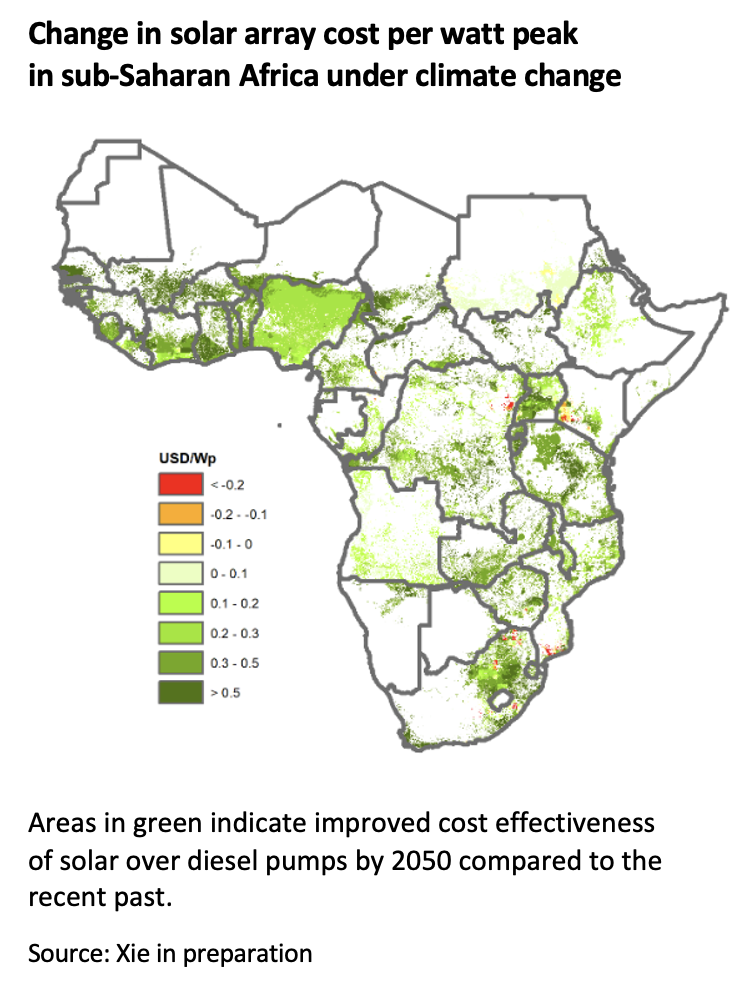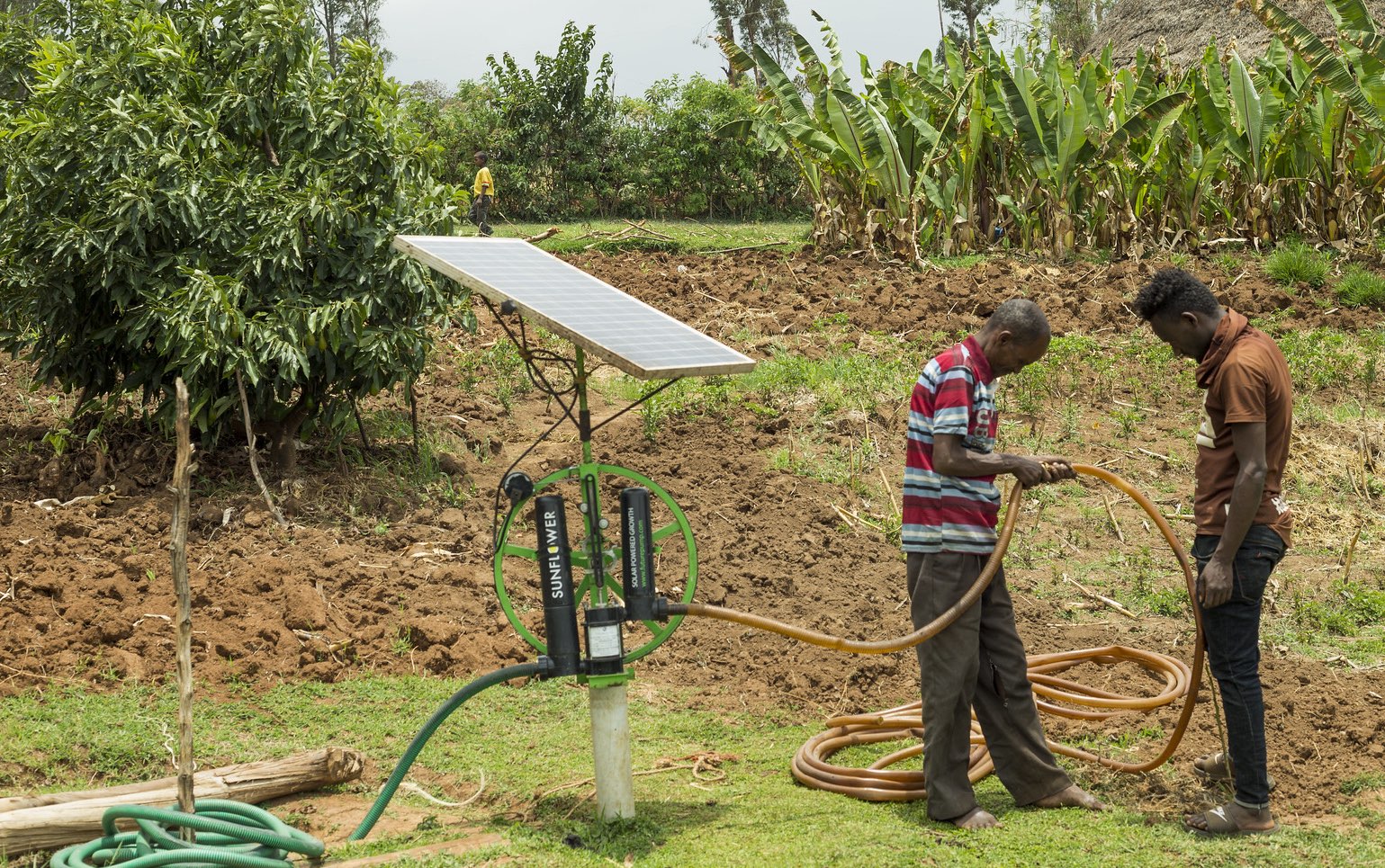It seems that joint food and energy crises have become the norm: Three have now occurred in just the last 15 years, driven by climate change and other human-made crises such as COVID-19 and the Russia-Ukraine war.
All three crises dramatically pushed up food and energy prices, as well as those of fertilizers, leading to an increase in the number of undernourished people worldwide (Figure 1). The number of hungry has now been on the rise for almost a decade now, and it is unclear if or when the global community will come together to implement interventions to turn this around.
Figure 1
Source: Headey and Hirvonen (2022) using data from FAO, World Bank, IMF.
The three recent food-fuel price crises demonstrate that food and energy systems are interlinked and that these systems, in turn, are affected by continuing degradation of the environment and water resources. Addressing—and ultimately preventing—such crises is a complex global challenge. Encouraging small-scale actions in these systems that address climate change and pollution, and build sustainability and resilience, can play a key role. Solar irrigation pumps are a particularly promising technology in this regard.
How water, energy, food, and environmental systems in recent crises are interlinked
The 2007/08 crisis was triggered by innovations in bioenergy development—especially the use of maize as transportation fuel, putting food and fuel production in direct competition with each other—and was compounded by higher oil prices and a series of climate shocks. While water issues are not seen as a cause of the crisis, extreme climate events did affect agricultural production levels and water was diverted to grow crops for biofuels, thus reducing water availability for food production and other human needs. The 2011/12 crisis was caused by similar factors, with even more food being diverted for fuel and further climate shocks.
The current crisis began with the COVID-19 pandemic, which quickly spread due to poor public health management in many countries. The pandemic may also be tied to the underlying driver of environmental degradation causing increased human-wildlife interactions, allowing the easier spread of zoonotic diseases. The pandemic response in turn disrupted global transportation networks, including those for food, fertilizer, and fuel. As in previous crises, a series of climate shocks, heat waves, droughts, floods, and cyclones reduced food production in key breadbasket regions, as well as energy access and use and water security.
Small steps to break the fuel and food price crises
Can such crises be prevented? Unfortunately, it appears unlikely that the global community will come together to take decisive action to address them—the limited sharing of COVID-19 vaccines, continued failure to act collectively on climate change, and recurrent food and fertilizer export bans by key producers suggest that there is no will for the complex, coordinated global effort required. However, there are many small steps that individual governments can take, such as eliminating subsidies for fossil fuels. There are also many steps that each one of us can take, such as switching from personal cars to public transportation, reviewing and reducing our energy use, and re-evaluating our diets.
There are also many steps that farmers can take, including more judicious use of fertilizer, adopting improved agronomic practices and seed technologies and better and adapted use of irrigation technologies. Many of these actions would address the water, energy, and food price crises jointly. As an example, improved nutrient use efficiency of nitrogen and phosphorous fertilizers would both reduce water pollution and increase food security by lowering greenhouse gas emissions.
Solar irrigation pumps—a force to reckon with?
The switch from diesel to solar irrigation pumps is another way to help reduce fuel price spikes and also build climate resilience through improved water security at the farm and household level. Solar pumps eliminate the use of gasoline or diesel fuel for running irrigation pumps (and, for electric pumps, the need for electricity produced by burning fossil fuels). They thus decouple fuel from food price shocks for farmers. At larger scales, increased adoption of solar pumps dampen the transmission from fuel to food price spikes.
Solar pumps might well be a force to reckon with. Their costs have declined dramatically and they can democratize energy access in regions that either remain off-grid, such as much of rural sub-Saharan Africa, or where the reliability of electrical grids is poor, such as Pakistan. Solar-powered groundwater irrigation can increase and stabilize food production during dry seasons and droughts and thus counteract the food price shocks stemming from many extreme climate events.
Moreover, recent analyses using lifecycle analysis suggest that the technology is now highly favorable financially in many parts of sub-Saharan Africa. For example, the breakeven cost of a solar irrigation systems drawing groundwater is US$2.50 per watt peak in central and Southern Africa for most crops and water application methods, that is, at that solar irrigation installation cost, diesel pumps are not competitive. If solar pump costs can be lowered further, to US$2 per watt peak, diesel pumps would lose their comparative advantage for half or more of irrigable crops in West and East Africa.
Moreover, as shown in Figure 2, the competitive edge of solar irrigation is growing further with climate change, as a result of complex interactions across higher solar irradiation levels, increased crop water demands and higher temperatures (the latter of which can negatively affect solar system performance). And this higher economic viability of solar over diesel pumps is irrespective of the food-security enhancing climate mitigation benefits of these systems.

Figure 2
However, despite the low cost, climate resilience attributes, and increased agricultural productivity of solar irrigation pumps, few have been deployed in the low- and middle-income countries that would benefit most. According to the International Renewable Energy Agency (IRENA), as of 2019 less than 3% of the total solar water pump capacity in the world had been installed in Africa. Most solar pumps are in use in India, with 91% of the total installed MW, thanks to long-term government subsidies for the technology. But even in India, this translates only to about 300,000 pumps, compared to more than 5 million diesel pumps still in operation.
Thus, while the potential is large, implementation faces considerable finance and supply chain challenges. The USAID-supported Innovation Laboratory for Small-Scale Irrigation (ILSSI) has developed finance models that can expand inclusivity of access to this technology in Ghana and Mali, and the CGIAR NEXUS Gains Initiative is starting pilots to identify business and finance models in South Asia.
As with all technologies, the solar-powered irrigation pump is not a silver bullet that can strike at the heart of the water-energy-food-environment nexus on its own. But solar array by solar array, it can help farmers, and eventually all of us, to dampen recurrent fuel and interlinked food price spikes while also reducing greenhouse gas emissions.
Claudia Ringler is Deputy Director of IFPRI’s Environment and Production Technology Division (EPTD); Hua Xie is an EPTD Research Fellow. This post also appears on the Feed the Future Innovation Lab for Small Scale Irrigation site.







